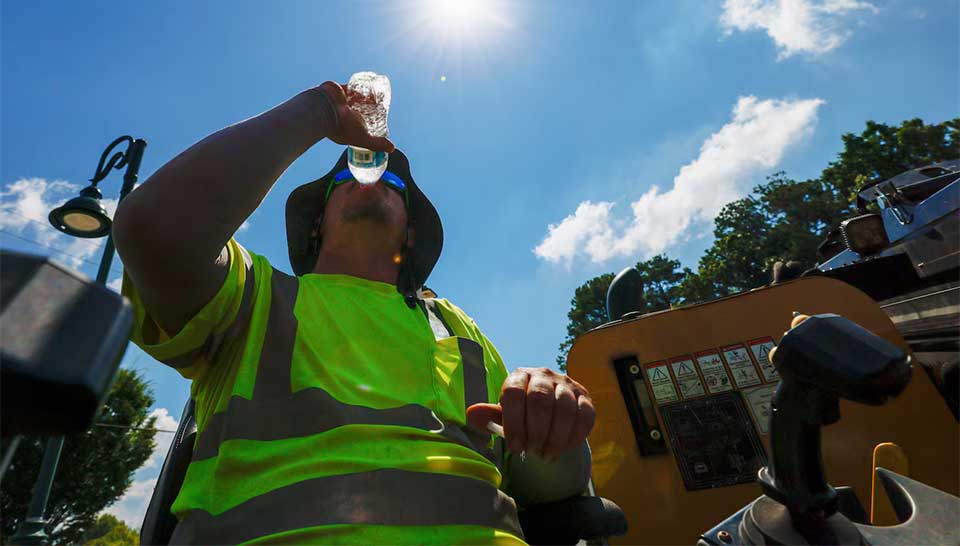
Just a few months before the 2024 U.S. presidential election, the Biden administration appears to be accelerating its timeline to finalize a regulation that could protect 36 million workers from the harmful effects of exposure to extreme heat.
On Tuesday, the Occupational Safety and Health Administration, or OSHA, released the draft text of a proposed rule on preventing heat injury and illness amongst U.S. workers. If finalized, the proposed rule would become the nation’s first-ever federal regulation on heat stress in the workplace. The development comes at the start of a summer that’s already seen record-breaking heat, and days after OSHA announced tens of thousands of dollars in proposed penalties for a case involving a 41-year-old farmworker who died of heatstroke while working in Florida last year.
In a press briefing, a senior Biden administration official described the draft rule’s requirements as “common sense.”
“The purpose of this rule is simple,” said the official, who offered comments on the condition of anonymity. “It is to significantly reduce the number of worker-related deaths, injuries, and illnesses suffered by workers who are exposed to excessive heat and exposed to these risks while simply doing their jobs.”
The draft rule requires employers to implement heat injury and prevention plans that grant workers access to drinking water, shade, rest areas, and breaks once the heat index hits 80 degrees Fahrenheit. Employers would also have to develop an acclimatization plan to help new employees become accustomed to working in extreme heat and train supervisors and employees in how to identify heat illness. (Notably, three out of four worker fatalities that stem from heat-related illness happen on the first week of the job.) Once the heat index exceeds 90 degrees F, additional breaks and increased heat-illness symptom monitoring would also be required. The proposed rule includes a requirement that employers evaluate these plans for potential updates at least once a year.
These regulations would apply to all employers overseeing outdoor and indoor work where OSHA has jurisdiction, which includes most private-sector employers and workers in all 50 states and Washington, D.C., but doesn’t cover some workers at state and local government agencies, self-employed workers, or independent contractors. The draft rule also exempts workplaces where there is no reasonable expectation of exposure to the initial heat trigger, and indoor working conditions where temperatures are kept below the 80-degree F threshold. Furthermore, it excludes situations where employees are exposed to temperatures over the standard threshold for short periods of time, among other exceptions.
Advocates who have been fighting for national heat regulation for years are praising the move. Ligia Guallpa, executive director of the nonprofit Worker’s Justice Project, a New York City worker center for low-wage, immigrant workers, said her group “applauds” the proposed rule.
“The Biden administration is moving to protect the lives of workers,” said Amy Liebman, chief program officer at the nonprofit Migrant Clinicians Network, which aims to reduce health inequities among immigrant communities. “This effort is particularly critical as states such as Texas and Florida are not only failing to protect workers from the heat but pursuing legislation that will cause undue harm to workers.” Last year, Texas Governor Greg Abbott passed a law that blocked cities from enacting their own heat protections for workers. In Florida, Governor Ron DeSantis signed a similar law into effect this past spring.
OSHA first announced that the agency would begin developing a federal heat stress rule in 2021, following a summer of record-breaking temperatures. Typically, the federal rulemaking process is fairly lengthy, and experts and organizers who spoke to Grist last month worried that the Biden administration would let the proposed heat regulation linger under review for another year or longer — at which point, depending on the outcome of the presidential election in November, the rule could be nullified by a new administration or a Republican-controlled Congress. But the surprise release of the proposed rule this week appears to signal a readiness from the Biden administration to advance the regulation, potentially with the goal of finalizing it before the end of the year.
Representative Greg Casar, a Democrat from Texas, said he feels certain, following a visit from a top OSHA official to his home state in June, that finalizing a federal heat standard is the agency’s top regulatory priority. “I think it’s clear that President Biden and his administration are responding to the climate crisis, are responding to what workers are asking for, and they’re expediting this because workers just can’t wait seven or eight years,” Casar said.
Experts expect that the OSHA rule could face legal challenges. “There are always technical quibbles,” said Michael Gerrard, the founder and faculty director of the Sabin Center for Climate Change Law, “and sometimes, some courts will pick up on those quibbles.” Gerrard pointed to the recent Supreme Court decision to block the Environmental Protection Agency’s “Good Neighbor” rule, which regulated smog by taking aim at smokestack emissions, as an example of a successful legal challenge based on the argument that federal officials neglected to address public comments on the draft plan. Potentially, going forward, “people who want to challenge rules will take a look at the comments on the draft rule and complain if any of the comments weren’t thoroughly responded to.”
The draft heat rule is now subject to a public comment period and a subsequent final review by the White House. Given the highly politicized nature of heat regulation, it is likely that OSHA will receive a considerable amount of comments on the proposed standard, which could potentially draw out the process of finalizing the regulation. A spokesperson from OSHA said the agency “cannot speculate” as to when the rule may be finalized, but that it was moving “swiftly and responsibly” to ensure workers have necessary protections.
“All workers deserve safety and an advocate for their rights,” said Guallpa. “We are heartened to see the federal government stepping up to require basic protections from extreme weather.”










